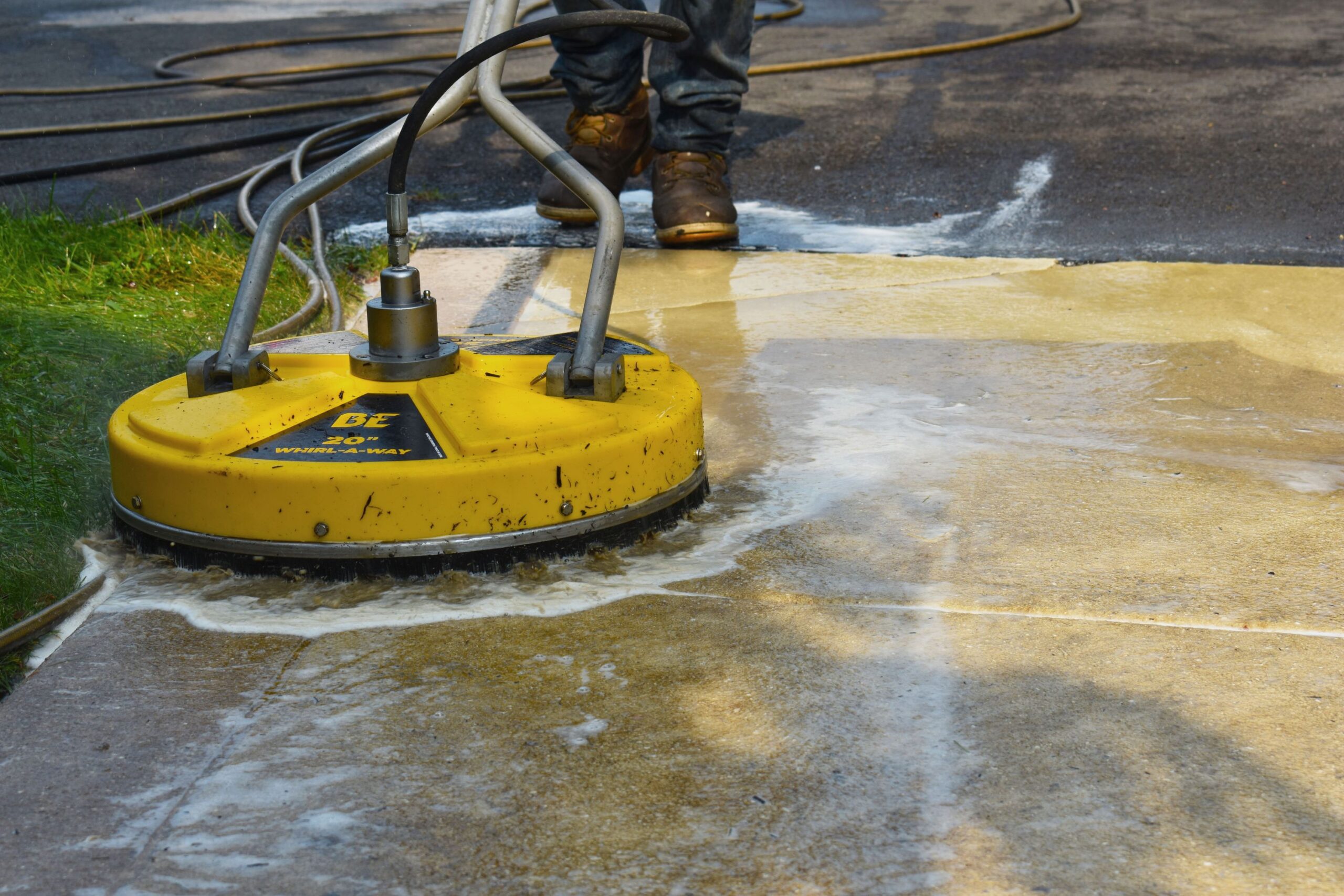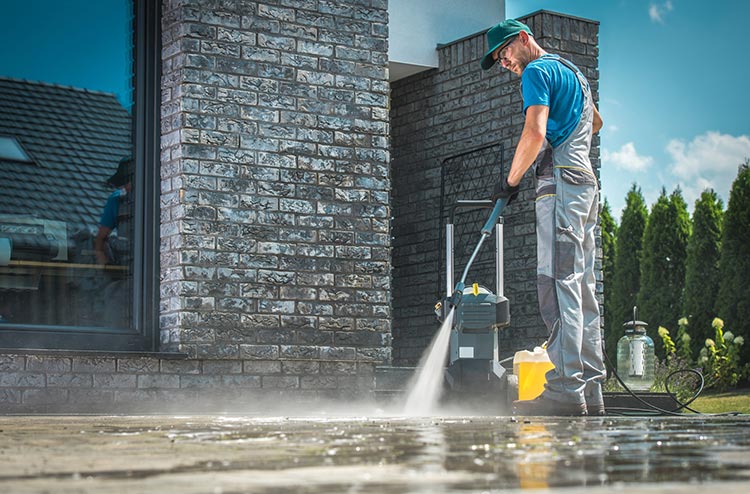Revitalize Your Home: The Ultimate Overview to Stress Washing
Stress washing is a very useful tool for house owners aiming to bring back the visual appeal and durability of their properties. To navigate these intricacies and achieve ideal outcomes, it is essential to check out the basic aspects of pressure washing, consisting of practical guidance on resolving common stains and making sure safety and security throughout the procedure.
Understanding Pressure Washing
Stress cleaning is an effective cleansing approach that utilizes high-pressure water spray to remove dirt, gunk, mold and mildew, and various other impurities from various surfaces. This technique is especially efficient on difficult surface areas like driveways, walkways, decks, and home siding, where typical cleansing approaches might fail. By using customized equipment that generates high-pressure streams of water, stress cleaning can pass through deeply into surfaces, effectively dislodging and getting rid of stubborn debris.
The process is not only efficient but also eco-friendly, as it usually counts only on water, lowering the demand for rough chemical cleansers. In addition, stress cleaning can improve the aesthetic appeal of residential or commercial properties, maintaining their value and lengthening the life-span of surfaces by stopping degeneration triggered by contaminants.

Choosing the Right Devices
Selecting the proper equipment is vital for achieving ideal cause pressure cleaning. The first decision entails choosing in between electrical and gas pressure washing machines. Electric versions are typically lighter, quieter, and ideal for residential tasks like cleansing lorries or patios. Gas systems, on the various other hand, provide greater pressure and circulation prices, making them suitable for bigger tasks such as cleansing driveways or exterior siding.
Next, think about the pressure ranking, measured in extra pounds per square inch (PSI) For light-duty jobs, a pressure washing machine with 1,300 to 1,600 PSI suffices, while medium-duty tasks typically call for 1,600 to 2,500 PSI. Durable tasks might necessitate machines going beyond 2,500 PSI.
Additionally, the circulation rate, measured in gallons per min (GPM), influences cleaning performance (Pressure Washing Lockhart). A greater GPM permits quicker cleansing however might call for extra effective tools
Techniques for Efficient Cleaning Up

The method of overlapping strokes is crucial for also insurance coverage. Furthermore, preserving a consistent distance from the surface area, typically 12 to 18 inches, allows for effective application without creating harm.
Using the proper nozzle is also important. A wide-angle nozzle is optimal for larger locations, while a narrow nozzle can target persistent dirt or crud. In addition, using a sweeping movement instead of a stationary spray assists to prevent concentrated areas of stress, which could cause surface area damages.

Tackling Common Stains
When it involves preserving the look of outdoor surface areas, attending to usual discolorations effectively is vital for prolonging their lifespan and boosting visual appeal. Different surfaces, including vinyl, timber, and concrete, can build up stains from natural materials, oils, and toxic wastes, necessitating a targeted strategy.
For oil discolorations, a combination of degreasers and stress washing can yield superb outcomes. Use the degreaser to the discolored location, enabling it to penetrate before using a pressure washer to eliminate the residue. Organic stains, such as mildew or algae, commonly call for a solution including bleach or a dedicated mold and mildew eliminator, complied with by pressure cleaning to restore the surface's original appearance.
Corrosion spots, typically located on metal surface areas, may require specific corrosion removers. Use the product and scrub the location prior to pressure cleaning to eliminate any sticking around discoloration. It is very important to check any type of cleaning solution on a like it small, low-profile location first to prevent damage.
Safety And Security Tips and Best Practices
Making sure security while stress washing is paramount, as the high-pressure water can pose substantial threats if not Check This Out handled properly. To safeguard yourself and others, always wear appropriate individual protective devices (PPE), consisting of safety and security goggles, gloves, and sturdy shoes. This gear will protect you from flying particles and the possibility for injury.
Before beginning, check the pressure washer for any type of leakages or harmed components. Familiarize yourself with the equipment's manual to comprehend its procedure and safety features. In addition, ensure the area you are working in is devoid of obstacles and that any kind of electric connections are safe from water exposure.
When operating the pressure washing machine, keep a safe range from surface areas and avoid intending the nozzle at individuals, pet dogs, or vulnerable things. Make use of the right nozzle for the job, as different nozzles create varying spray patterns and stress levels. Be mindful of your environments: safe and secure loose products, watch for electrical lines, and stay clear of working in wet conditions that might lead to slips or drops.
Verdict
To conclude, stress cleaning offers as an important device for home owners looking for to boost residential property aesthetics and long life. By comprehending the intricacies of tools selection, efficient cleansing techniques, and usual stain removal, the possibility for rejuvenating one's home becomes evident. In addition, adherence to safety and security protocols makes certain a reliable and protected cleaning process. Inevitably, the expertise obtained from this guide gears up house owners with the needed abilities to maintain and elevate their residential property's appeal and worth effectively.
Pressure washing is an effective cleansing approach that utilizes high-pressure water spray to get rid of dust, gunk, mold, and various other contaminants from different surface areas. By utilizing specific equipment that creates high-pressure streams of water, pressure washing can pass through deeply into surfaces, efficiently dislodging and cleaning away persistent debris.
Nonetheless, it is crucial to comprehend that stress washing needs a particular level of skill and knowledge to avoid damaging surface areas. Softer products like wood or painted surface areas require a reduced stress setting to stop damages, whereas concrete or brick surface areas can hold up against greater stress degrees.
Organic stains, such as mildew or algae, frequently require a remedy including bleach or a committed mold remover, adhered to by stress cleaning to recover the surface's original appearance. - Pressure Washing Lockhart